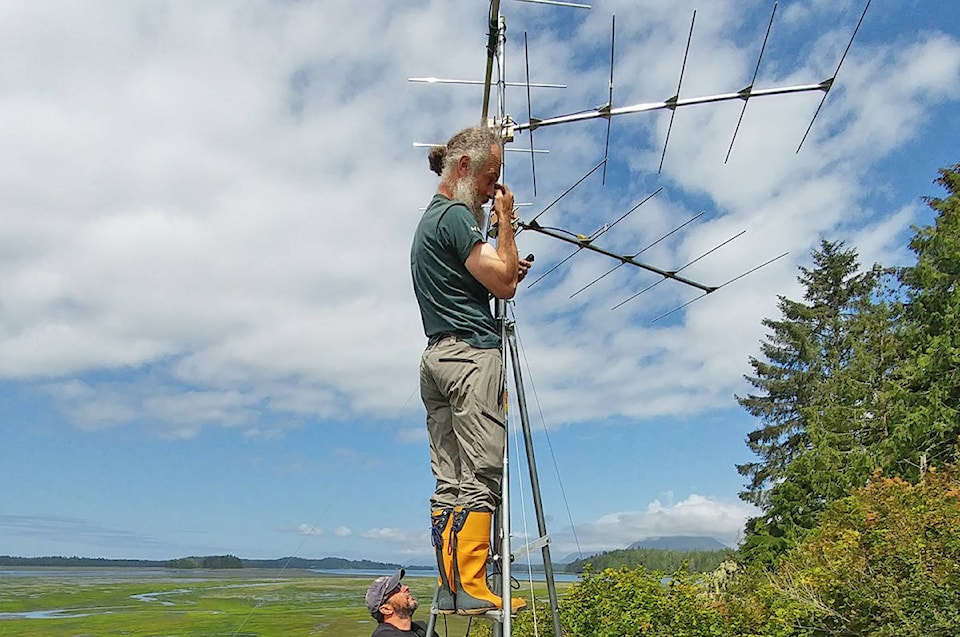An intensive shorebird study has strengthened the case for banishing dogs from Long Beach.
The Pacific Rim National Park Reserve teamed up with the Canadian Wildlife Service and Rainforest Education Society to launch a Radio-Telemetry Project in 2018 focused on the West Coast’s migratory shorebird populations and how those populations are using Long Beach and the Tofino Mudflats.
The area has long been known as a vital pitstop for tens of thousands of shorebirds flying between their feeding grounds in South America and their breeding grounds in the Arctic during two peak migration windows, April-May and July-September.
READ MORE: Birders flock to Tofino for Shorebird Festival
What was not known prior to the Radio-Telemetry Project however, is just how long those birds are resting and refuelling in the area before moving on. The project’s early results from its first year suggest that shorebirds are spending longer on the West Coast than originally thought, which means the environment around them is more important than realized.
“Birds don’t just stop anywhere for any particular reason,” Yuri Zharikov, the Park Reserve’s monitoring ecologist, told the Westerly News. “At the time they stop, they need to acquire energy at that site in order to continue the migration and they will stay there for as long as they need to acquire that energy and based on how long is the flight to the next stop, that’s how much energy they need to get.”
READ MORE: Clayoquot Biosphere Trust awards $20,000 grant to migrating shorebird research in Tofino
He explained that the research team used bird calls to capture shorebirds in mist nets at Long Beachand placed tiny transmitters on them to track their movements. He added that the transmitters weigh less than a gram and are designed to fall off when the bird molts roughly three months later.
The date provided by the transmitters showed that some shorebird species that were thought to spend two or three days on the West Coast, actually spend closer to two weeks.
“They use those beaches up to two weeks per individual in order to build up their reserves so, for them, it’s clearly a very important area to sustain their migration,” he said. “If they have to stay here for two weeks, then every time they get displaced, disturbed, flushed out et cetera, that’s a drag on their time…because they lose energy and they lose time not feeding.”
READ MORE: VIDEO: Pacific Rim National Park Reserve reminds visitors that all dogs must be leashed
He added that many of the birds that were tracked seemed to prefer to stay on the beach, rather than move to the more isolated mudflats nearby.
“That would suggest that the beach, the space that the birds can feed on the beach and the time to do that, is critical for their survival over the annual cycle,” he said.
He said each stopping site along the roughly 25,000-kilometre, round-trip, migration can have an enormous impact on the survival of shorebird species because of the number of birds each stop represents and that his team plans to advocate for the Park Reserve to adopt active management measures during peak migration periods to decrease the threat of shorebirds being disturbed.
“You need to consider the ways to give them space and time and minimize disturbance so they are not flushed as often…Whenever you talk about that, of course, dogs come first on the list of potential disturbing agents,” he said.
“The obvious would be to say that dogs are not allowed on beaches at all. Let’s say beaches are closed to dogs either at all times or during shorebird migration times, what that will eventually do is that people who come with dogs will obviously not come and that will have that small controlling effect on human-use also.”
READ MORE: Tourist claims Tofino’s beaches have ‘gone to the dogs’
Leashes are mandatory for all dogs within the Park Reserve, but that law has proven difficult to enforce and Zharikov has suggested that the only effective method for ensuring off-leash dogs don’t disturb shorebirds is a seasonal dog ban. He said the Park Reserve has not had a detailed discussion of its options and he plans to wait for another round of data before recommending any strategies.
“Once we have those answers, that’s what we’ll put forward to the management and the argument will be that we need to be a bit more proactive,” he said.
“Our numbers for human visitation are increasing. We know that and, if that is the case, it is just a matter of time when that increase will start having an impact on the beaches…It’s just plain common sense: when Long Beach is filled with people in the middle of the day in July and August, there is no place there for birds.”
He added that birds can handle humans being around, as long as people stay a respectful distance away, but off-leash dogs are prone to running near them and making quick, sudden, movements.
“They are amenable to human presence. They will feed around people as long as they are respected and as long as there is even a bit of space given to them, you don’t need much,” he said. “If that were the case, then you can easily increase human use of the beach without impacting the birds, but there has to be that understanding and that respect for them.”
